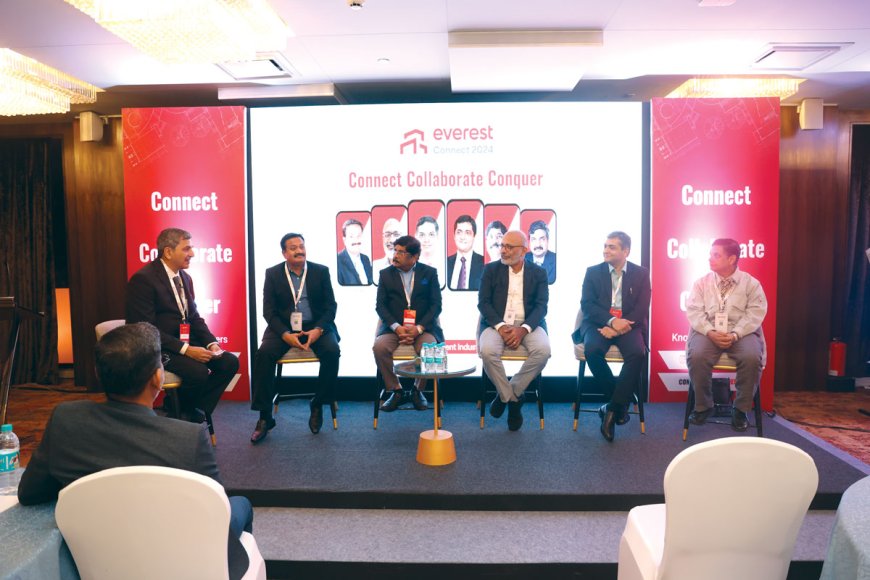Industry experts discuss PEB trends and challenges

Everest Industries recently hosted the ‘Everest Connect 2024’ roundtable, bringing together prominent industry experts to discuss key issues in Pre-Engineered Buildings (PEB) sector. The event featured a distinguished panel, including Dr S R Satish Kumar, Professor of Structural Engineering, IIT Madras; Amit Shah, Director, DCS Consultants; Jayaramalingam G, Vice President, Civil & Structure, Reliance Industries; Prashant Deshmukh, Principal Architect, Prashant Deshmukh & Associates; and Rajesh Ukey, Director, SR Consultants.
The panelists shared valuable insights into the various stages of PEB projects, addressing the growing demand for PEBs among architects and the advantages they offer over conventional construction methods.
PEB vs conventional construction
Speaking at the event, Prashant Deshmukh highlighted the reasons behind the rising popularity of PEBs, especially when compared to conventional steel and RCC buildings. He stated, “RCC will likely be obsolete in the next five years. Globally, RCC is rarely used, particularly in multi-level construction with seismic considerations. PEB technology offers significant advantages, such as slimmer columns—often 1/20th the size of RCC columns—resulting in more efficient space utilization. Unlike conventional steel buildings, which often face issues with on-site fabrication and design inconsistencies, PEBs ensure that what is designed is precisely what is built.”
Quality control and economic efficiency
Jayaramalingam emphasized the importance of quality control in PEB projects, noting, “PEB buildings maintain stringent quality norms, ensuring that the design specifications laid out by architects and engineers are met precisely. For cost-effectiveness, it's crucial for consultants to develop specifications that economize the building without compromising on quality. A well-prepared architectural or structural design is essential before the project begins.”
Seismic design considerations
Addressing the critical issue of seismic design, Dr Satish Kumar discussed the evolution of building codes following the 2001 Gujarat earthquake. He remarked, “The Gujarat earthquake was a wake-up call, revealing that buildings in Ahmedabad collapsed under minor tremors. Although India is not as seismically active as regions like New Zealand, Japan or California, awareness and knowledge about earthquake-resistant design remain low. Even in highly seismic areas like the US and Japan, steel buildings have experienced damage, prompting extensive research into seismic design for steel structures. Unfortunately, many engineers still lack awareness in this area.”
Challenges of competitive bidding
Amit Shah addressed the challenges associated with competitive bidding in PEB projects. He explained, “When contracts are awarded on a per-kilogram basis, the focus on optimizing design diminishes. Not all PEB vendors employ skilled design engineers, leading to overdesign. To achieve optimized designs, it is advisable to solicit designs from multiple vendors and also have an in-house consultant create a parallel design. However, competitive bidding can sometimes lead to over-optimization, as vendors strive to secure the contract.”
The insights shared by the panelists at the Everest Connect 2024 roundtable highlighted the importance of innovation, quality control, and preparedness in addressing the challenges faced in PEB projects.







